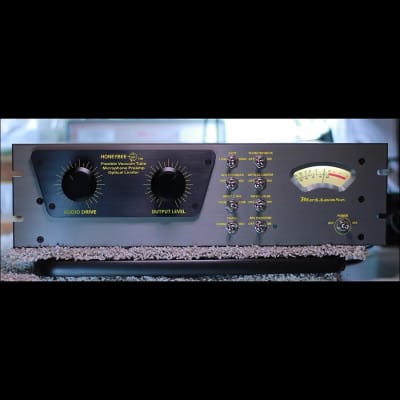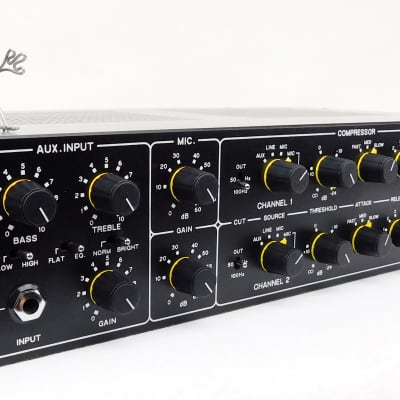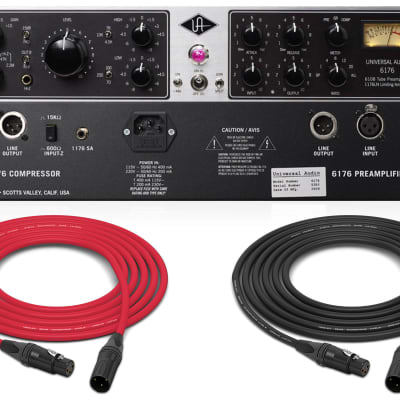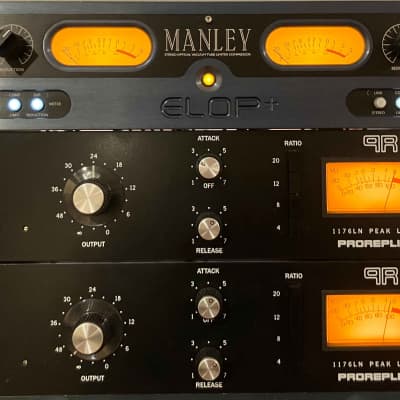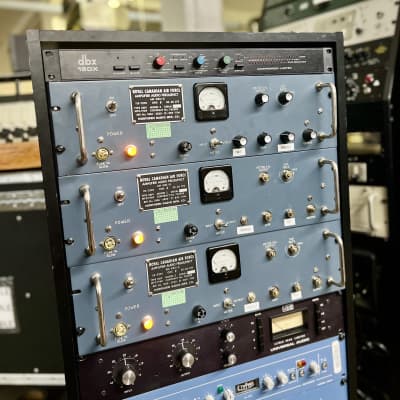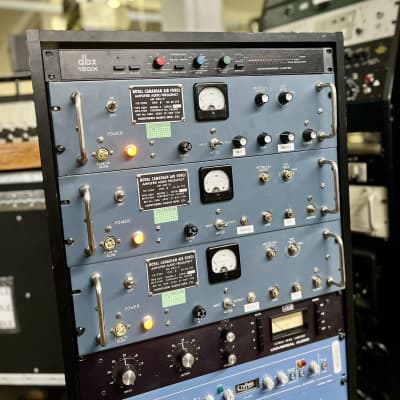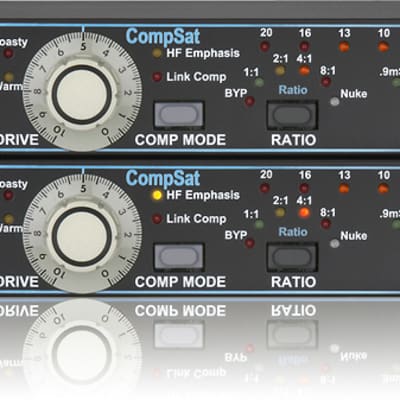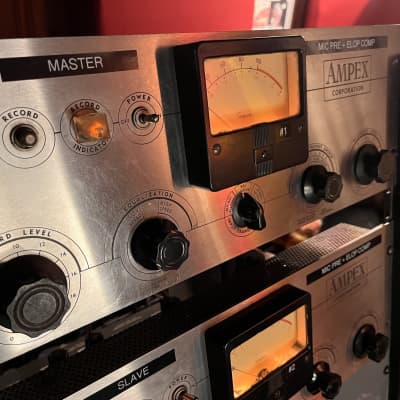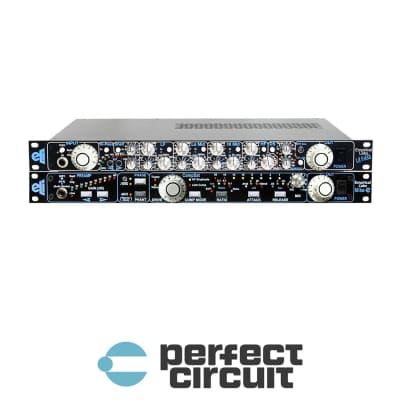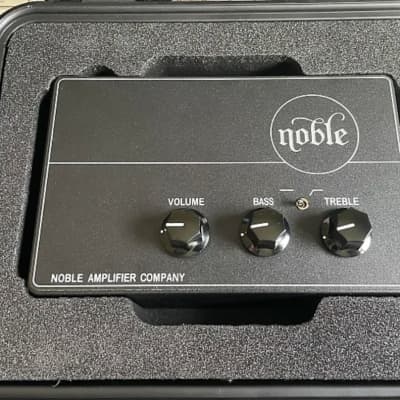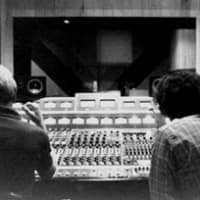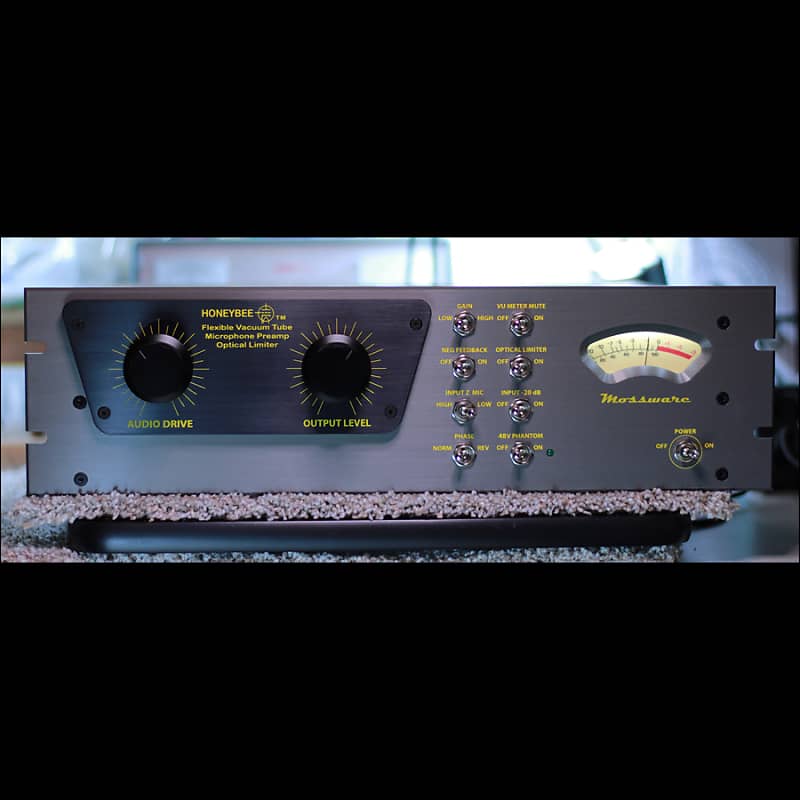

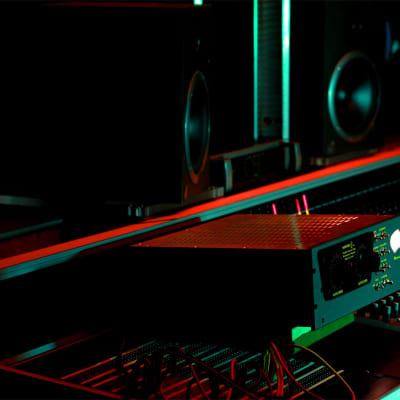
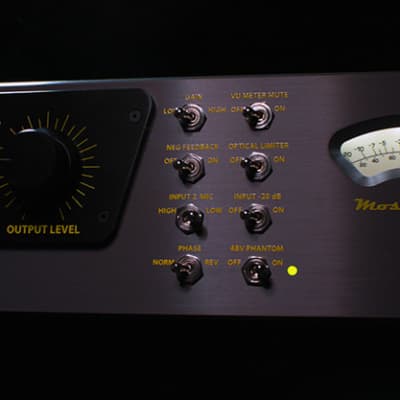
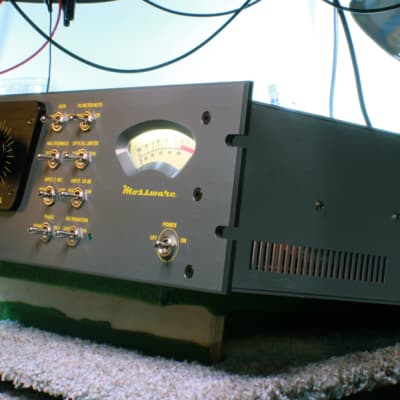
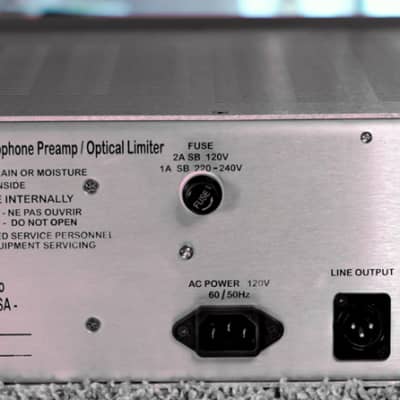
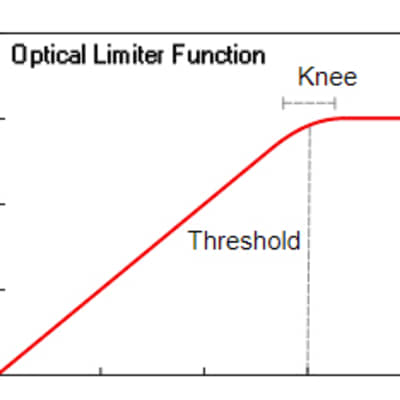
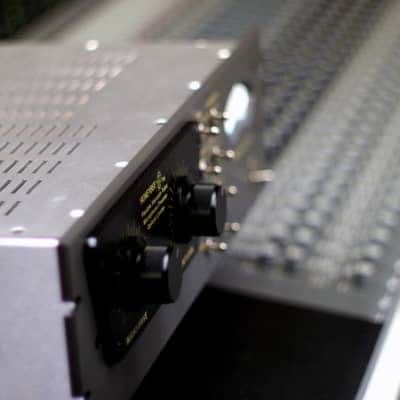
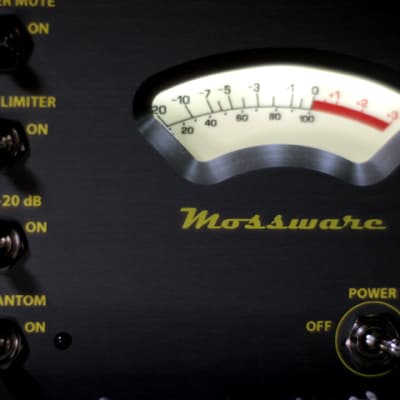
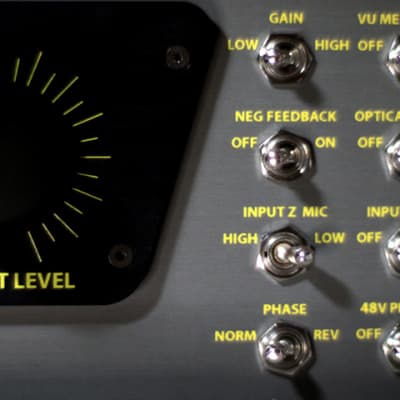
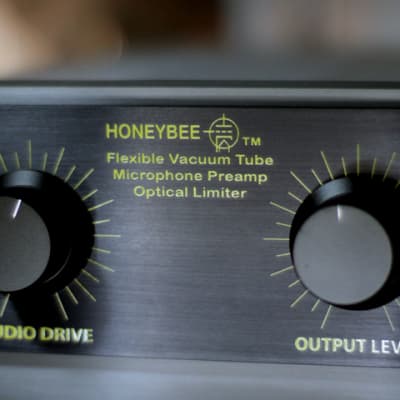
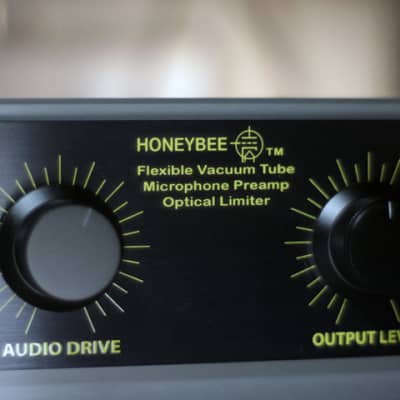
HONEYBEE FLEXIBLE VACUUM TUBE MIC PREAMP and OPTICAL LIMITER
This is a single input and single output Preamp/Optical Limiter with Flexible Performance.
1) Straight Vacuum Tube Mic PreAmp (with no Multi-Stage Neg Feedback (as used in other preamps) or Optical Limiter)
with selectable Low Gain or High Gain front end amplifier stages
2) Selectable Multi-Stage Neg Feedback with Vacuum Tube Mic PreAmp
3) Selectable Optical Limiter with Vacuum Tube Mic PreAmp
This uses mil spec triode vacuum tubes for the entire audio path.
It front panel is 19" Width x 5.25" High, The depth is 15.5".
It has Low Gain or High Gain front end amplifier stages important for normal and low output mics.
No noisy fans are used in this product. So that it can be placed in the room with the artist and mic.
The HoneyBee Pro-Audio Vacuum Tube Mic-Preamp / Optical Limiter is designed to obtain a greater vacuum tube sound if adjusted to do so. This is the reason for the two knobs. This design has been optimized for flexibility to allow the artist-engineer to seek out that special sound they are trying to achieve. Where other tube mic-preamps will have a committed "SAFE" design with fixed Negative Feedback that really has an effect on the sound, the HoneyBee makes things like Multi-Stage Negative Feedback, Low / High System Gain, Optical Limiting, Input Drive and Output Level, selectable or adjustable from the front panel. This is all done at the very low mic signal level and not at line level which I have found can add noise to the output. I designed this so that I could have a signal that was as clean as a whistle all the way to lots of tube sound or color. It is up to you. It is very intuitive to use too.
Multi-Stage Negative Feedback is where you take the output of the unit and feed it back to an earier stage out of phase. This is selectable.
There is negative feedback that is within each triode sections which is not selectable. The effect of this type of negative feedback is to stabilizing the performance within a single triode stage. Think of going rock climbing with a friend who has been known to become hysterical at times. This keeps the person from doing that. Same for the the triode stage. It keeps the triode vacuum tube stable. This is not the same as Multi-Stage Negative Feedback which takes the output and feeds it back to the input of the unit.
Minimum THD+Noise typically measures in the range of 0.02% to 0.05% (20Hz to 20kHz) in final testing if set for low distortion performance. Minimum THD+Noise defines the base-line noise and distortion of the electronics. It is this low value that helps you when you need a super clean clear vacuum tube sound. This can be useful when recording instruments with many strings like a piano or strummed acoustic rhythm guitar. A lot of work went into this feature.
Higher THD can be achieved easily when desired for more vacuum tube color and a fatter sound. Triode vacuum tubes when over-driven will produce the warm even-harmonics which can enrich the texture and body of solo instruments. This is a very desirable sound in the right places.
We often use the Limiter-ON setting for a much bigger sound. The limiter will allow for the lower volume parts of the performance to be more present in the recording without distorting the louder areas. This is similar to a LA2-A Leveling Amplifier as the HoneyBee also uses optical coupling for its limiting. The difference is that the HoneyBee uses Leveling at a very low signal amplitude without incurring the noise of line level. The HoneyBee uses a much cleaner Limiting circuit designed right inside the preamp area. How hard you hit the limiter is up to you in your search for your particular sound. The harder you drive the Limiter the bigger the sound will get.
In my recordings I work to contrast between leads and backup. For example, for acoustic guitars playing rhythm backup the preamp needs to be clean as the strings will heterodyne together producing a lot of noise that can mask the singer or lead instrument. Google "audio masking". The 6 strings of a acoustical guitar will mix together in a nonlinear device, like your ear, or an amp. What happens is two strings will create the two original notes, plus the sum and minus of both notes. That is 4 notes. That is for every string on the guitar. You may not want that sound. So, in that case we set the mic preamp to low gain "clear" sound. To let the guitar become over driven will create even harmonics and then that just covers everything up and may not be what you want.
When singing tight duet harmony you can often hear a third voice which is not what either singer is singing. This too is the result of heterodyning. You can read about heterodyne on the web. Just Google "heterodyne". It is used in receivers to spread the stations apart.
In lead instruments or vocals you can benefit from warm second harmonics that are produced in triode vacuum tubes. So this preamp does both and everything in between. You just have to set it to what sound you want. If you do a lot of assembling of tracks to make a finished mix, then this is the only preamp you will need.
You might notice in some of the photos that the front panel is taller than the preamp enclosure. This allows for airflow from the inside of the preamp to have an escape route to the outside world. The air comes in on the side and leaves on the top cover. You may have noticed that some rack mount equipment makers suggest you use a single rack unit plate between the units. This is not required here as I designed this into the actual preamp enclosure. This will save you many rack spaces. Also, the air enters the enclosure from the side, not the bottom where the heat from whatever is below the enclosure can enter and heat up the preamp. In designing for CE requirements the unit had to survive 24 hours with all the air vents taped up. This passes that requirement. It is best that you not do this though as it could age some of the parts faster.
This is designed for 120Vac power sources common in the USA. If you need to use this in a 240Vac environment you have to return the unit to me for that adjustment. In the 120Vac mode the power can vary from 80Vac to 135Vac without any changes in the preamp/limiter performance. If you use this for field recordings, like music festivals out in the woods, then this will handle it. I have recorded at places like that. All you need to have happen is the power company not have the correct power factor capacitors switched in and you are there.
This design is also unique because of the AC Power Switches on the inside top and bottom sides that sense the covers being removed. They disconnect the AC power to protect against someone taking either of these covers off with the unit plugged in. This technique is used in military and high power gear. As there is high voltage for the tubes inside I thought I would include it in this design too. I don't believe I have ever seen this in other Pro Audio gear.
There is a 5 year Limited Warranty during which Mossware LLC will repair or replace defective parts with new parts. The buyer must cover shipping charges both ways. This does not extend to units that have been damaged or rendered defective due to accident, abuse, modification or misuse. In addition, this does not include any parts that were not supplied by Mossware LLC. Mossware LLC does not take responsibility for any modifications made to the Honeybee that were unauthorized. For this Mossware LLC will apply a time and materials charge for any repairs.
Vacuum tubes are warrantied for 2 years only.
Except for this Limited Warranty, Mossware LLC makes no other warranties expressed or implied, including any implied warranty for fitness for a particular purpose or merchantability.
Reverb Buyer Protection
Reverb has your back if your item is lost, damaged, or doesn't match its description. Simply report any issues within 7 days and we'll help you get a full refund.Learn more about Reverb Buyer Protection.
| Condition | Brand New (New) Brand New items are sold by an authorized dealer or original builder and include all original packaging.Learn more |
| Brand |
|
| Model |
|
| Finish |
|
| Categories | |
| Year |
|
| Made In |
|
